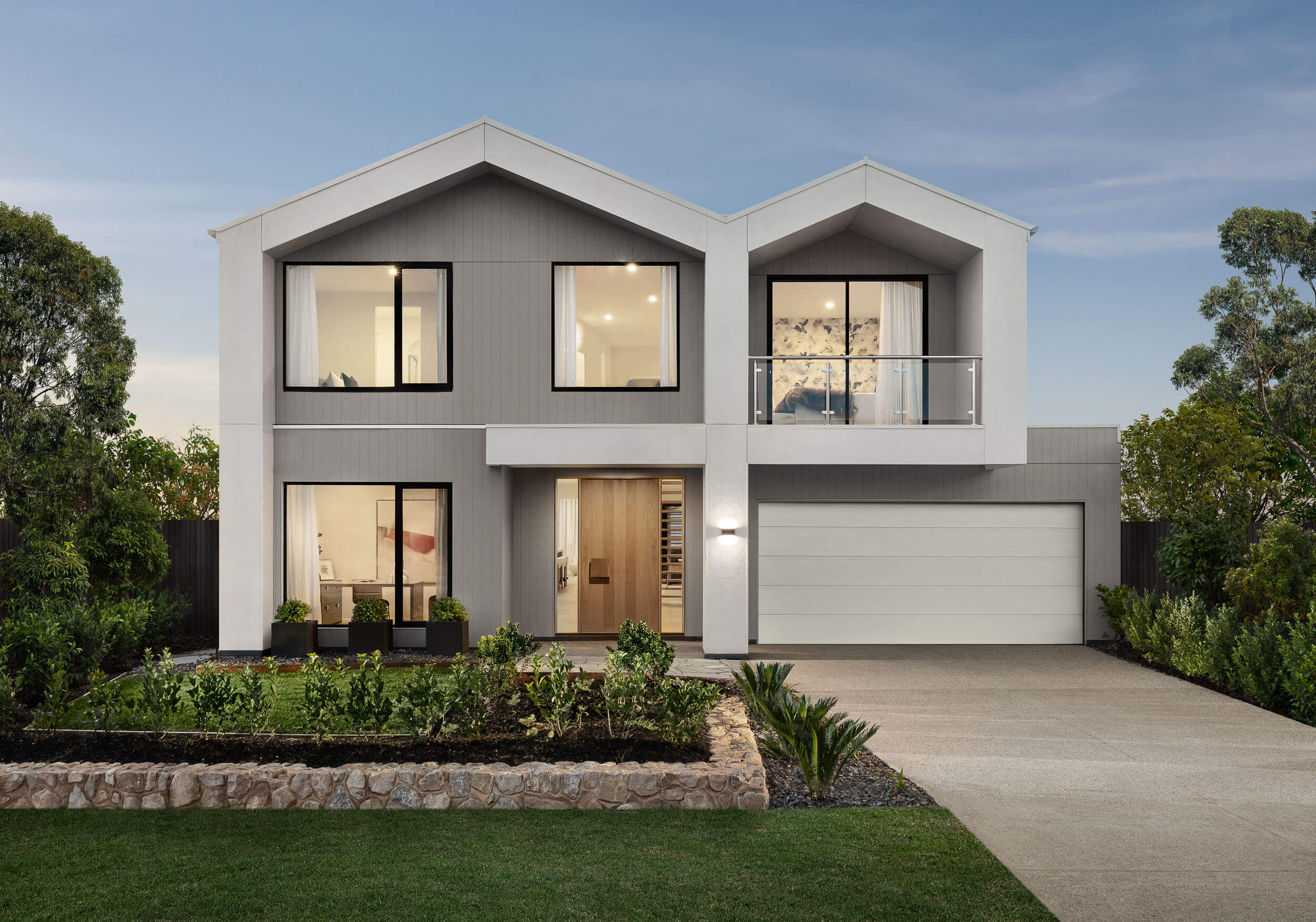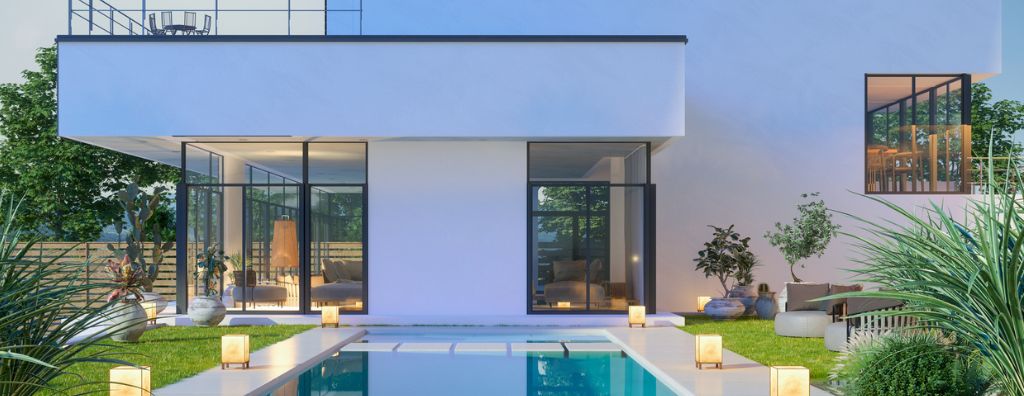Green Sustainable Residential Building Solutions for a Improved Future
The Duty of Modern Home Style in Creating Useful Living Spaces
Modern home design dramatically affects the performance of living spaces, specifically via the adoption of open floor strategies and the usage of lasting products. These layout principles not just improve social connection however also advertise versatility for various activities within the home.
Significance of Open Flooring Plans
Open up floor strategies have become a hallmark of contemporary home design, mirroring modern choices for connection and flexibility in living spaces. This layout principle removes standard barriers, enabling a smooth flow between the cooking area, eating, and living locations. The outcome is an inviting setting that fosters social interaction and involvement amongst family members and guests.
The significance of open flooring strategies expands beyond appearances; they also boost functionality. House owners can quickly adapt these rooms for various tasks, from enjoyable guests to family celebrations, making them very flexible. Open layouts often make a home feel bigger and extra large, adding to a general feeling of comfort and simplicity.
In addition, the combination of natural light is a significant advantage of open layout. Huge windows and less wall surfaces boost the infiltration of sunlight, developing a brighter and much more welcoming ambience. This element not only improves the setting but can additionally positively influence the occupants' mood and well-being.

Lasting Materials in Design
As modern home architecture remains to progress, the selection of materials has actually obtained raising value, particularly in the context of sustainability. The integration of lasting products not only lowers the ecological effect of building yet additionally boosts the general top quality of living rooms. Architects and contractors are currently focusing on products that are eco-friendly, recyclable, and have low embodied energy.

Additionally, green insulation products, like cellulose and lamb's wool, improve energy efficiency, causing reduced utility costs. The use of low-VOC (unpredictable organic substances) paints and coatings also promotes healthier interior air top quality, straightening with the growing awareness of health in home style.
Integrating these lasting products not only fosters environmental responsibility however also produces aesthetically pleasing and useful home. As homeowners become a lot more aware of their ecological impact, the demand for sustainable materials will certainly proceed to form modern-day home design.
Integration of Smart Modern Technology
The integration of wise technology in contemporary home design is reinventing the method we experience and communicate with our home. Home automation systems make it possible for citizens to control lights, temperature, and safety and security with smartphones or voice commands, improving ease and comfort. This technological advancement not just simplifies daily routines but also advertises energy efficiency, enabling house owners to keep an eye on and readjust their power intake in real time.
Moreover, wise innovation improves security and safety and security functions. Advanced monitoring systems and wise locks provide home owners with assurance, using remote tracking abilities and notifies for unusual activities. Combination of smart devices also plays a vital duty, as gadgets like fridges, stoves, and washing equipments interact with individuals, optimizing efficiency and reducing waste.
Additionally, see the seamless assimilation of smart modern technology can boost the visual appeal of modern-day homes. In general, the marriage of smart modern technology and contemporary home design not only boosts capability but likewise fosters an extra linked, effective, and lasting method of living.
Making Best Use Of Area Efficiency
Integrating smart modern technology right into modern home architecture not only improves ease however additionally addresses journalism need for look at here now area performance in significantly compact living settings. The layout of contemporary homes focuses on multifunctional rooms that adapt to the owners' requirements. By utilizing modular furnishings and built-in storage solutions, architects can produce versatile locations that maximize usable square footage.
Open up layout stay preferred, enabling liquid motion between rooms and getting rid of unnecessary walls. This approach not only fosters a sense of spaciousness however also urges natural light to penetrate throughout the home. In addition, innovative storage space solutions, such as under-stair areas and wall-mounted racks, successfully utilize formerly wasted areas.
Smart innovation additionally adds to area efficiency by allowing home owners to manage various systems from another location. For circumstances, automated lighting and climate control can enhance energy use, decreasing the demand for excess home heating or cooling in underutilized rooms. Furthermore, integrated appliances made for compact living can improve cooking area and washing tasks, maximizing beneficial space for other vital features.
Ultimately, the thoughtful combination of design, style, and modern technology is crucial for producing practical living areas that satisfy modern-day way of livings while taking full advantage of performance. melbourne home residential projects.
Enhancing Exterior Links
An expanding focus on boosting exterior links is changing contemporary home design into a seamless blend of indoor and outdoor living. This evolution is driven by the acknowledgment of nature's extensive influence on health and way of life. Designers are progressively creating areas that invite the outdoors in, utilizing large home windows, gliding glass doors, and open flooring plans that encourage fluid movement between indoor and external settings.
Terraces, patio areas, and verandas are being integrated into the general architectural concept, increasing useful living area and promoting a connection with nature. The unification of all-natural materials, such as timber and rock, additional blurs the lines in between inside and outside, developing a cohesive visual that improves the home's overall allure.
Landscape design also plays a crucial role, with thoughtful style that consists of gardens, water attributes, and outside seats locations. These elements not just improve but likewise advertise outdoor tasks and leisure. Additionally, lasting techniques, such as the use of native plants and reliable watering systems, enhance environmental advantages while minimizing maintenance.
Eventually, boosting outdoor connections with modern-day style not only enhances the living experience however additionally grows a harmonious relationship here are the findings between occupants and their all-natural environments.

Conclusion
Finally, modern-day home architecture dramatically adds to the development of useful home through the implementation of open floor plans, sustainable materials, and clever technology. The focus on making best use of room efficiency and fostering outside links better enhances the overall quality of life for owners. melbourne home residential projects. By prioritizing these design aspects, contemporary design not just fulfills the advancing needs of residents however likewise advertises an unified partnership in between interior and exterior settings, inevitably forming an extra lasting future